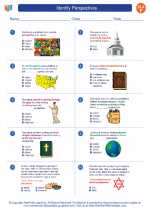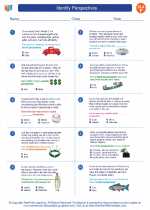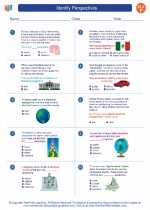Identifying Perspectives
Identifying perspectives involves understanding the point of view from which a story or information is presented. It's important to recognize that different people may have different perspectives on the same topic, and this can greatly impact the way information is interpreted. Here are some key points to keep in mind when identifying perspectives:
Understanding Point of View
Point of view refers to the narrator's position in relation to the story being told. It's important to consider who is telling the story and how this impacts the information being shared. In literature, point of view can be first person (the narrator is a character in the story), third person limited (the narrator only knows the thoughts and feelings of one character), or third person omniscient (the narrator knows the thoughts and feelings of all characters).
Recognizing Bias
It's crucial to be aware of bias when identifying perspectives. Bias refers to the unfair or unbalanced presentation of information. Authors, journalists, and speakers may have biases based on their personal experiences, beliefs, or affiliations. It's important to consider how bias may influence the way information is presented and to seek out multiple perspectives to gain a more comprehensive understanding of a topic.
Considering Multiple Viewpoints
When analyzing perspectives, it's beneficial to consider multiple viewpoints. This allows for a more well-rounded understanding of a topic and can help in recognizing the complexity of different perspectives. By exploring different viewpoints, individuals can develop a more informed and nuanced understanding of the subject matter.
Study Guide
- What is the definition of perspective?
- How does point of view impact the way a story is told?
- What is bias, and why is it important to recognize when identifying perspectives?
- Why is it beneficial to consider multiple viewpoints when analyzing perspectives?
- Can you provide an example of a situation where understanding different perspectives is important?
[Identify Perspectives] Related Worksheets and Study Guides:
.◂English Language Arts Worksheets and Study Guides Sixth Grade. Identify Perspectives

 Worksheet/Answer key
Worksheet/Answer key
 Worksheet/Answer key
Worksheet/Answer key
